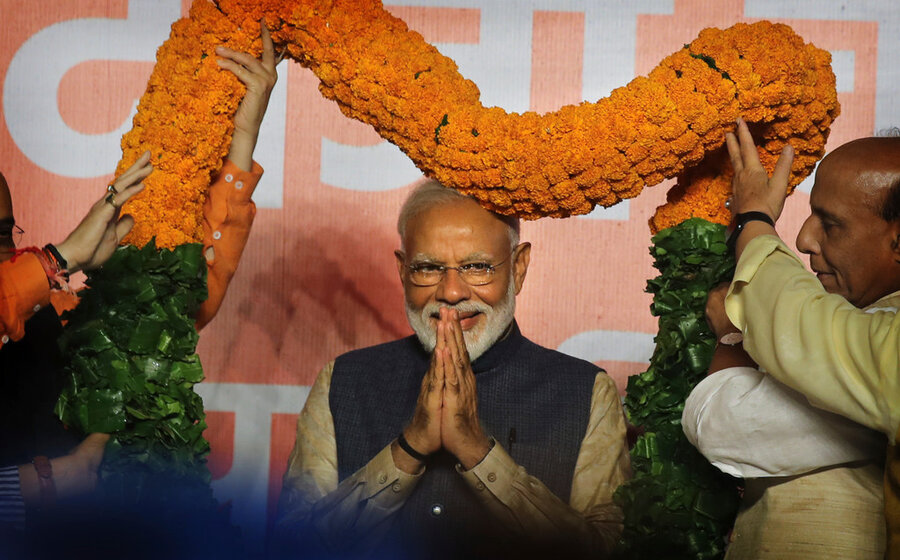After India’s big election, time for inclusion
Loading...
The recent election in India was the most inclusive public event in history. More than 600 million people gathered over six weeks in April and May to cast ballots in polling stations from sea level to 15,000 feet in the Himalayas. Even the poorest and most rural people were treated with respect and equality.
Yet despite this massive display of democracy, the big winner, Prime Minister Narendra Modi, felt compelled to tweet this message after his party’s big victory was declared Thursday: “Together we will build a strong and inclusive India.”
Since coming to power in 2014, Mr. Modi has struggled to convince India’s religious minorities, especially the 14% Muslim minority, that he is not seeking cultural and political dominance for the majority Hindus. Under his rule, India has seen a rise in hate crimes by right-wing Hindu groups. One state minister was banned from campaigning for three days after making anti-Muslim comments. And to show he is working for everyone, Mr. Modi kept repeating this slogan during the campaign: “together with all, development for all.”
The son of a tea seller, Mr. Modi made this election very much about him. That might seem bad for a democracy. Yet his popularity only helps distance the prime minister from his ruling Bharatiya Janata Party, whose roots lie in the idea that Hindus are a single nation and are threatened by Muslims and others. One survey found a third of BJP voters would have backed another party if Mr. Modi was not running.
Mr. Modi won the contest in spite of a downturn in the economy and increasing stress for farmers. Rather than play to religious bigotry, he has had to come up with a slew of welfare schemes for poor people. He also took advantage of an attack by Pakistani terrorists in February to appeal for broad-based nationalism.
Since he came into office, the number of people with access to the internet has doubled to 500 million. With hopes of turning India into a global superpower, Mr. Modi cannot afford for flare-ups of religious intolerance to damage the country’s image.
India has a good history of secular governance and religious coexistence since its independence in 1947 – and despite the heavy sectarian violence during the partition of British India. Inclusion is now part of its identity. Just the sheer number of voters attests to that. Mr. Modi and his BJP, even though they won, must honor this legacy of harmony.







